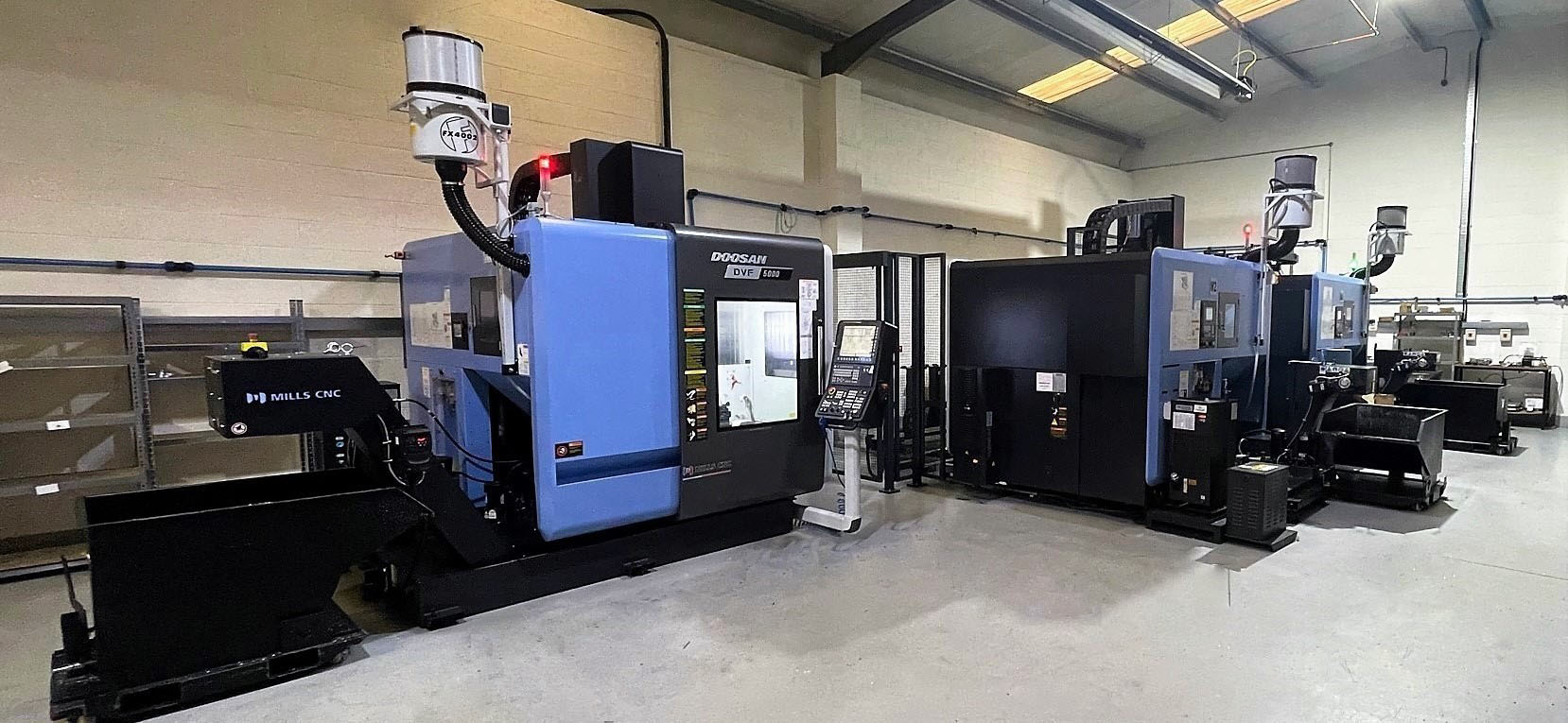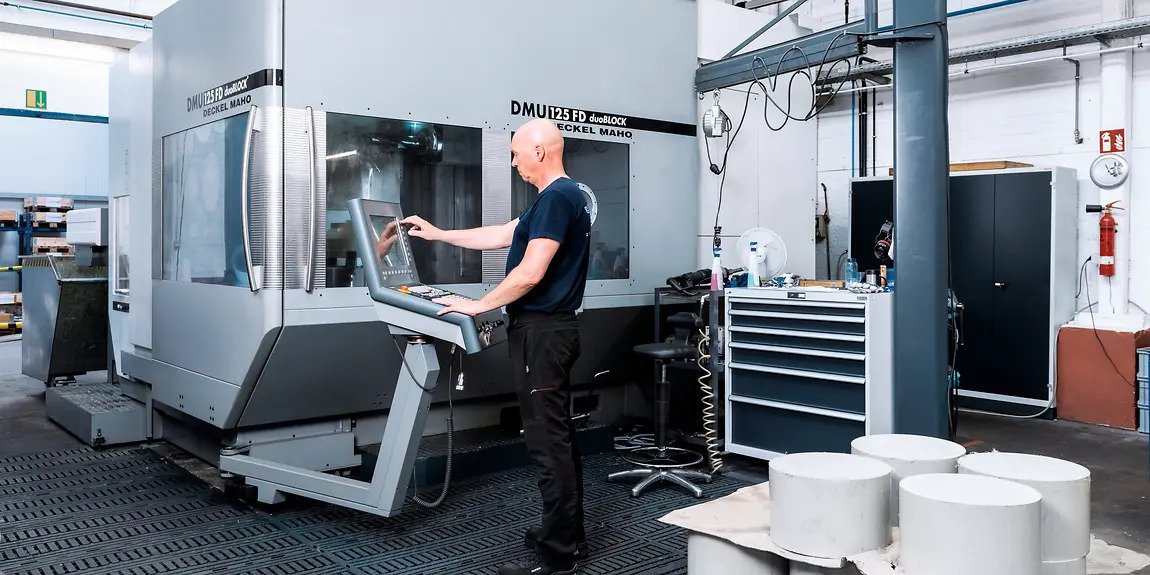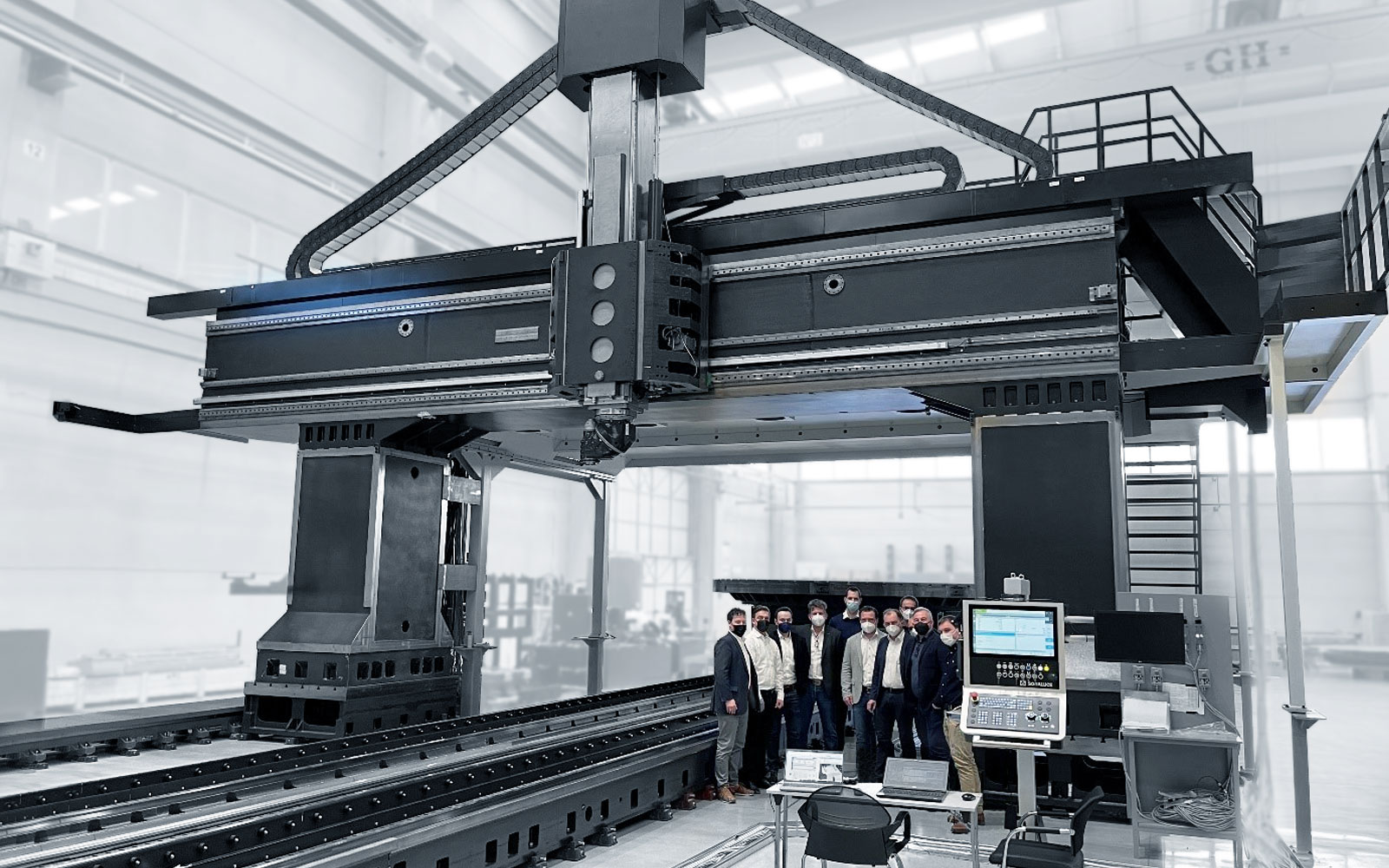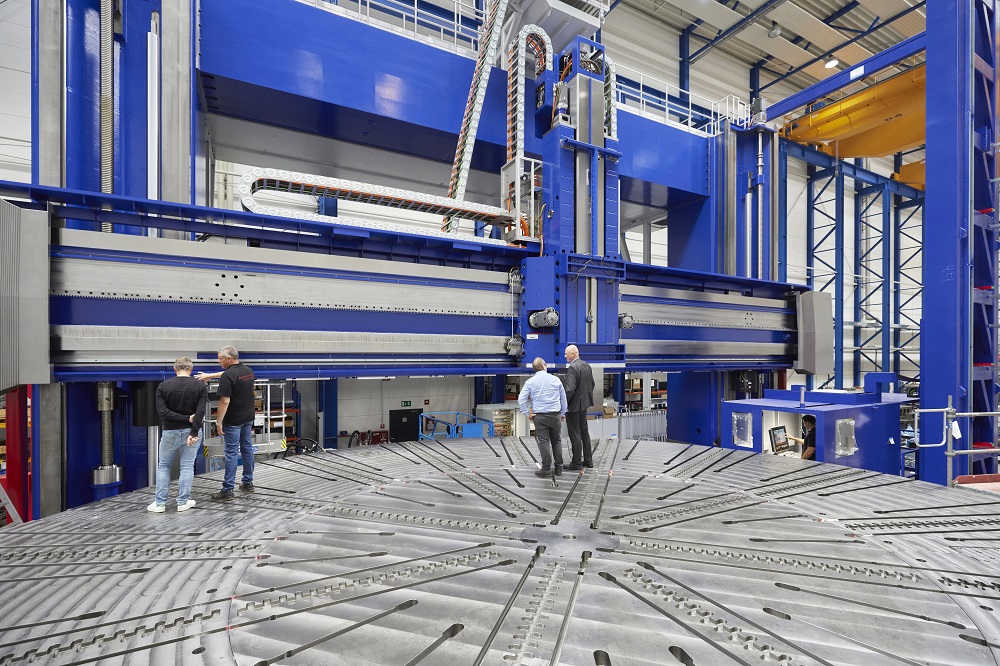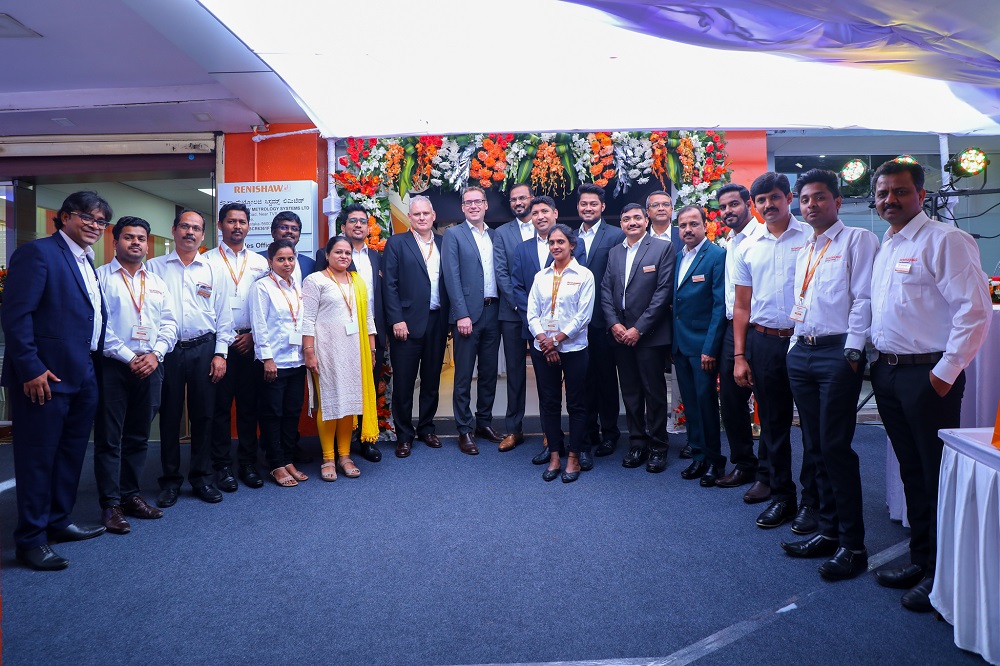Mills CNC, the exclusive distributor of DN Solutions’ (formerly Doosan) machine tools and a major automation systems’ provider to UK and Irish component manufacturers, has recently supplied precision subcontract specialist, Lenane Precision, with a new DVF 5000 simultaneous five-axis machining centre.
The machine, the third DVF 5000 to arrive at the company in as many years, was delivered and installed at Lenane’s modern production facility in Shannon, County Clare in September 2022. Notably, the latest DVF 5000 has significantly increased the company’s machining capacity and capabilities, and is seeing use at this moment in time to produce a range of complex components for aerospace and medical device customers. These components, made from aluminium, stainless and titanium, have intricate features, tight tolerances and exacting surface finishes.
Says Jim Lenane, managing director at Lenane Precision: “Machining prototypes and first-article components for the highly regulated aerospace and medical sectors means that there is little room for manoeuvre or discrepancy from product design to production result: parts need to be right first time, every time.”
He adds: “The new DVF 5000 has been deliberately positioned adjacent to the flexible automated manufacturing cell that was installed in March 2020. The new DVF 5000 complements and works in tandem with the cell.”
The automated cell – a sophisticated, complex and modular turnkey solution designed by Lenane in conjunction with Mills CNC – comprises two DVF 5000 machining centres and a FANUC industrial robot integrated by a robot positioning track that runs between both machines to enable fast, efficient and reliable part loading and unloading operations to occur. Other elements of the cell include an integrated racking system, holding up to 36 pallets (400 x 400 mm, each with a 140 kg maximum load). The company aims to get 20 hours pf machining operation from the cell every day.
For further information www.millscnc.co.uk






